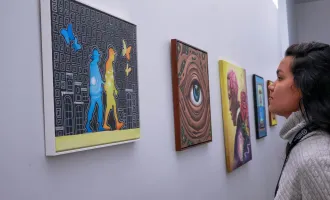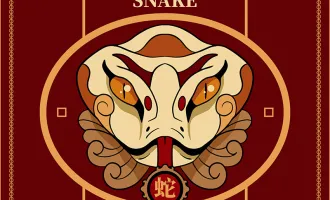Weaving History into the Teaching of Medicine
Recently I had the privilege of interviewing Dr. Victoria Sweet, former PhD graduate student in the history of medicine in the Department of Anthropology, History and Social Medicine at UCSF (Department of Anthropology, History and Social Medicine) and now UCSF Clinical Professor of Medicine and author of the book, “God’s Hotel.” Her book, which has received high praise in reviews in the New York Times and the San Francisco Chronicle, tells the story of what is probably the last alms house in the United States, Laguna Honda Hospital in San Francisco, through the eyes of a doctor and historian of medicine who worked there for the past 20 years and witnessed its transformation from hospital to health care facility. She took her position as a part-time job in order to pursue her interest in the history of medicine by embarking on a PhD program at UCSF.
Q: What has studying history meant for your medical training, and what role do you see for the teaching of history in the medical curricula nowadays?
During my medical training as an internist I used two books as reference: “Harrison’s”—(“Harrison’s Principles of Internal Medicine”), which is the classical textbook for medical students here in the US; and “The Oxford Textbook of Medicine,” which is the equivalent for students in England. These two books are considered the Bibles, so to speak, of textbooks for medical students, but they differ in the following, substantial regard: the American version (“Harrisons”) always starts out by describing the molecular and genetic underpinnings of a disease, while the English (“The Oxford Textbook”) begins with describing the history of a disease—when it was discovered, by whom, what the natural history of the disease looks like, etc. I find the latter more fun and more interesting to read, and actually, I think that the narrative of “The Oxford Textbook” sticks in your mind much more, since through that history, the disease becomes more real, more human, more personal.
Take smallpox for example. In “The Oxford Textbook,” you would have a visualization of the disease, which is rare today, since we are able to treat the disease in its early stages, and as a consequence, we rarely, if ever, get to see its natural history/course. Students like me who learn about a disease through its history will be mesmerized by the story—be it the history of a particular patient, of the discoverer of a disease, or of a medical instrument. The story will stick in their mind; they will be able to remember and recollect it in their future practice as clinicians.
Q: How has your history training helped you in your daily clinical practice?
Knowing the history of these diseases led me to diagnoses that others simply didn't think about. … For example, I remember this puzzling case I once encountered in my practice at Laguna Honda (nota bene, this case is not described in Dr. Sweet's book, “God’s Hotel”). The patient had a variety of symptoms, and represented a difficult case for all the medical staff. As it turned out, I was able to make the correct diagnosis, which was tertiary syphilis.
The other doctors had not thought about the possibility of syphilis, because it was considered an “old” disease, a disease of the past, and as such excluded from the range of possible diagnoses. Tertiary syphilis is hardly known anymore, because the primary cases are treated right away. But I knew about it from my history training at UCSF, and from “The Oxford Textbook of Medicine,” which always starts by describing the history of the disease. In other words, history gave me a kind of 3-D perspective of diseases, where the third dimension is time, the temporality of disease. A 2-D perspective of disease is good enough most of the time, but sometimes you will find that you need that third, temporal, dimension to make a correct diagnosis.
Q: What is the right place for the teaching of history of medicine in the current medical curricula?
Once I participated in a panel at a History of Medicine conference, and I was asked this question: “Should medical students be taught the history of medicine?” This prompted me to reflect. I thought it would be too easy to simply answer: “Yes, of course, they should!” So I took the long way around and tried to answer the opposite question:
“Why should students not be taught the history of medicine?” For example, one could say, because it is just “old history,” and there is already so much else to learn, and students need to squeeze so much learning in such a crowded time! But actually, when you think about it, knowing history makes you realize that many of the doctors who were so confident about the right cure/treatment for a disease—even as recently as only 40 years ago—have been proven wrong by history. Knowing history teaches you humility, and teaches you to be more cautious in your diagnosis, which is a good thing in clinical practice. You learn to rely more on the body’s natural ability to heal, and are more cautious in trying new things.
Q: How would you implement in practice the teaching of the history of medicine for medical students at UCSF?
In the future, my dream is to do exactly that—to use history as an heuristic to teach medicine. I would do that as a kind of experiment with a small group of UCSF medical students. As I see it, the teaching of the history of medicine has to be synchronous<pls check revision is OK> with the teaching of medicine. The two need to be woven together, as opposed to teaching medicine, and then, as an afterthought, teaching the history of medicine as a separate class. Otherwise it doesn’t work; the students will perceive history as a waste of time in their already very crowded schedule.
Students of medicine are bombarded by a huge quantity of knowledge, but this knowledge is fragmented. I want the knowledge of medicine and of the history of medicine to be woven together in a harmonic unity. My model for the kind of teaching I envision is William Osler. Sir William was a Canadian physician living in the second half of the nineteenth century, and he was one of the founding professors of Johns Hopkins Hospital. He invented the idea of “making rounds” for training medical students. One of his best-known sayings is: “Listen to your patient, he is telling you the diagnosis,” which emphasizes the importance of taking a good history from the patient, as I also tell in my book.
When I teach Physical Diagnosis I like to start by describing the history of a disease, who discovered it and when. For example, tuberculosis (TB), while being an “old” disease (it was known in the past as “consumption” due to the symptomatic weight loss it would cause), is coming back due to widespread antibiotic resistance, so that students need to be aware that even now, a cough might be TB. And I remind them of the fact, as they listen with their stethoscope, that the inventor of the stethoscope caught tuberculosis from listening to his patients, and they, too, should be careful.
As I see it, history is a wonderful heuristic for teaching medicine, because it helps you remember things, be alert to the present possibility of old diseases, and provides you with a third, temporal dimension that can turn out to be essential for a diagnosis. But history is not only useful, it is fascinating and a great plus in clinical practice, as I experienced at first hand.



